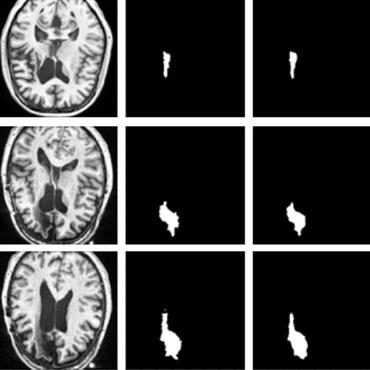SLSNet: Skin lesion segmentation using a lightweight generative adversarial network
The determination of precise skin lesion boundaries in dermoscopic images using automated methods faces many challenges, most importantly, the presence of hair, inconspicuous lesion edges and low contrast in dermoscopic images, and variability in the color, texture and shapes of skin lesions. Existing deep learning-based skin lesion segmentation algorithms are expensive in terms of computational time and memory. Consequently, running such segmentation algorithms requires a powerful GPU and high bandwidth memory, which are not available in dermoscopy devices. Thus, this article aims to achieve precise skin lesion segmentation with minimum resources: a lightweight, efficient generative adversarial network (GAN) model called SLSNet, which combines 1-D kernel factorized networks, position and channel attention, and multiscale aggregation mechanisms with a GAN model. The 1-D kernel factorized network reduces the computational cost of 2D filtering. The position and channel attention modules enhance the discriminative ability between the lesion and non-lesion feature representations in spatial and channel dimensions, respectively. A multiscale block is also used to aggregate the coarse-to-fine features of input skin images and reduce the effect of the artifacts. SLSNet is evaluated on two publicly available datasets: ISBI 2017 and the ISIC 2018. Although SLSNet has only 2.35 million parameters, the experimental results demonstrate that it achieves segmentation results on a par with the state-of-the-art skin lesion segmentation methods with an accuracy of 97.61%, and Dice and Jaccard similarity coefficients of 90.63% and 81.98%, respectively. SLSNet can run at more than 110 frames per second (FPS) in a single GTX1080Ti GPU, which is faster than well-known deep learning-based image segmentation models, such as FCN. Therefore, SLSNet can be used for practical dermoscopic applications.
PDF Abstract


